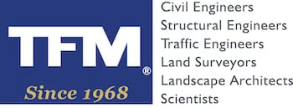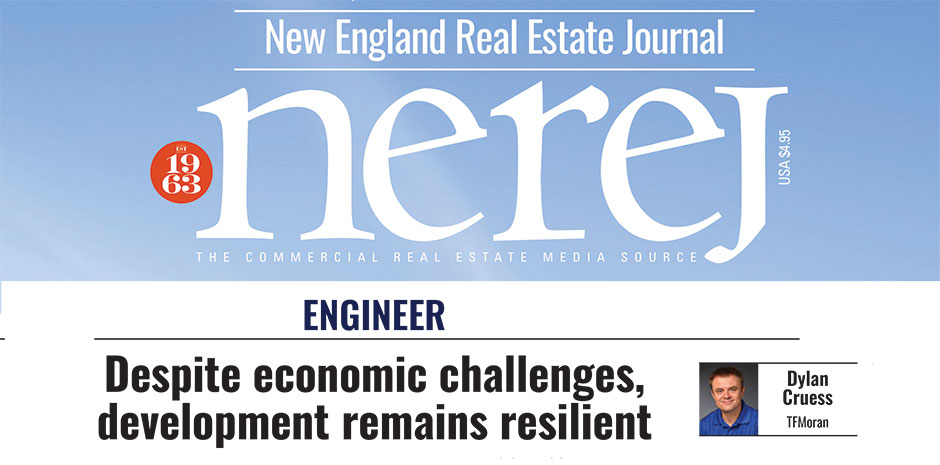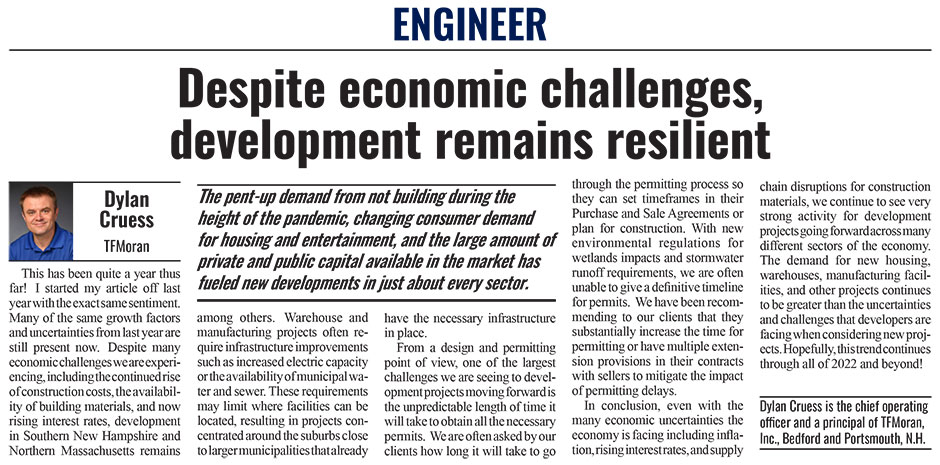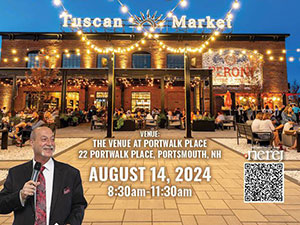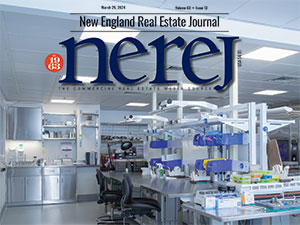New England Real Estate Journal’s May 27th issue features an Industry Leaders Spotlight with 11 professionals from numerous industries, including TFMoran’s Chief Operating Officer, Dylan Cruess. Dylan gives his perspective on how the first half of 2022 is going in the engineering field. Check out the full article here or continue reading below.
Despite Economic Challenges, Development Remains Resilient
New England Real Estate Journal
Industry Leaders Spotlight – Engineer
This has been quite a year thus far! I started my article off last year with the exact same sentiment. Many of the same growth factors and uncertainties from last year are still present now. Despite many economic challenges we are experiencing, including the continued rise of construction costs, the availability of building materials, and now rising interest rates, development in Southern New Hampshire and Northern Massachusetts remains incredibly strong and resilient. The pent-up demand from not building during the height of the pandemic, changing consumer demand for housing and entertainment, and the large amount of private and public capital available in the market has fueled new developments in just about every sector.
Over the past few years, New Hampshire has seen a huge in-migration of the population as people have moved out of major cities seeking a more rural or suburban lifestyle. This in-migration population has caused the demand for housing and other services to increase, which in turn has led to a huge increase in new multifamily and single-family housing developments throughout the southern part of the state and the upper valley. Northern New Hampshire has also seen an incredible increase in demand as people are purchasing second homes. Along with increased housing demand, we are seeing rapidly rising housing and rent prices which are leading to an affordability crisis for many people. In New Hampshire, there is a very strong push for affordable housing projects and there are many available sources of public funding to help with the economic viability of having below-market rental rates.
Another sector that we continue to see very strong demand for in New Hampshire is warehouse and manufacturing projects. International supply chain problems have led to a noticeable trend of companies bringing their distribution, product storage, and even their manufacturing back to the United States, and more specifically New Hampshire. We are seeing new facilities being proposed across many different sectors including aerospace, defense, construction materials, and food processing, among others. Warehouse and manufacturing projects often require infrastructure improvements such as increased electric capacity or the availability of municipal water and sewer. These requirements may limit where facilities can be located, resulting in projects concentrated around the suburbs close to larger municipalities that already have the necessary infrastructure in place.
From a design and permitting point of view, one of the largest challenges we are seeing to development projects moving forward is the unpredictable length of time it will take to obtain all the necessary permits. We are often asked by our clients how long it will take to go through the permitting process so they can set timeframes in their Purchase and Sale Agreements or plan for construction. With new environmental regulations for wetlands impacts and stormwater runoff requirements, we are often unable to give a definitive timeline for permits. We have been recommending to our clients that they substantially increase the time for permitting or have multiple extension provisions in their contracts with Sellers to mitigate the impact of permitting delays.
In conclusion, even with the many economic uncertainties the economy is facing including inflation, rising interest rates, and supply chain disruptions for construction materials, we continue to see very strong activity for development projects going forward across many different sectors of the economy. The demand for new housing, warehouses, manufacturing facilities, and other projects continues to be greater than the uncertainties and challenges that developers are facing when considering new projects. Hopefully, this trend continues through all of 2022 and beyond!
